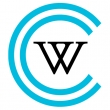Resume Guidelines and Samples
This resource is part of the Career Essentials Series — find the full collection here!

Your resume is generally a one-page document that clearly presents your current and past experiences and accomplishments so that your reader can understand the unique value that you bring to the table. The resume guidelines listed below are available as a downloadable pdf here.
Resume Samples
Getting Started
As you begin to draft your resume, consider the following. A resume is:
- Your first opportunity to make an impression.
Step back from the details to consider what story you want to communicate. - About the content, not the format.
Begin by writing your resume in Google Docs or Word, and focus on demonstrating your experiences. Avoid using templates that prioritize form over content. - A living document.
Your resume should be tailored to the specific position you are applying to, and will evolve throughout your career. - Limit hyperlinks.
Use hyperlinks sparingly. Too many will make your resume difficult to read and require extensive maintenance to keep them up to date. You may consider linking a relevant portfolio of work, an external personal website, or your LinkedIn profile. - Carefully curated.
Avoid including a laundry list of every experience. Focus instead on the experiences that are most relevant to the opportunity. - Easy to read.
Consider format, font type and size. - Easy to share.
Your resume should be sent to potential employers as a PDF document.
If you are drafting your first resume or trying to strengthen an existing resume, the video below is a helpful resource.
Writing Your Resume
Header
The header provides your full name and contact information (email address & telephone number). This section should not include personal information (e.g., sex, date of birth, marital status, photo). Items that may be included in your header include:
- Wellesley and/or home address: No need to include your full address, listing the city and state are enough. If you choose both, be sure to label each accordingly.
- Personal website, links to professional social media (Twitter, Instagram, LinkedIn).
- Pronouns.
Education Section
If you are a current student or recent alum, the education section should be just below the heading, with the most recent education listed first. Generally, you should not include your high school on your resume; however, first-year college students may include relevant high school experiences. Necessary information includes:
- Your institution and its location (city/town and state).
- Your degree (Bachelor of Arts), any major(s) and/or minor(s).
- Expected graduation date.
- Optional: Study abroad programs and institutions where you have cross-registered for classes.
Experience Section
In this section, provide details about your various experiences, highlighting accomplishments, learning outcomes, and transferable skills. “Experience” is broadly defined and can include full- or part-time work, summer jobs, internships, research, academic projects, campus leadership, volunteer opportunities, etc. Describe your experiences using strong, specific action verbs, and emphasize the results and impact of your work. You can create separate and distinct Experience sections to highlight those positions or skills (e.g., Research, Leadership, Extracurricular, or Volunteer).
- List experiences in reverse chronological order (most recent first).
- Include name and location of the organization where this experience took place and the title of your role.
- Include start and end date for your experience. If it is ongoing, list your end date as “Present.”
- Describe your experience in accomplishment statements, using short phrases starting with a strong verb. Be specific and quantify your experiences whenever you can.
- Create 2–5 accomplishment statements for each experience. "You do not have to have the same number of statements or bullet points for each experience.
Skills Section
This section provides an immediate view of the kinds of tasks you are ready to undertake. While you will want to be selective and only list relevant skills, these might range from technical skills, like expertise using a digital tool, to experience-based skills, like project management or database design. This section can also include certifications and languages. In general, it’s best to avoid general skills like people skills, time management, or critical thinking. As this section grows, you may divide it into several distinct skills sections, like Software Expertise, Language Skills, Teaching Skills, Design Skills, and more.
Resume Checklist
Check that your resume meets the following best practices:
☐ Simple, clean font (e.g. Times, Arial, Garamond)
☐ 10 to 12 pt. font
☐ 0.5 to 1 in. margins
☐ Devoid of personal pronouns (I, me, my, we)
☐ Reverse chronological order within each experience section
Finessing Your Resume
Level up your resume by scheduling an appointment with an advisor in Handshake. Career Education can help you to:
- Tailor your resume to the type(s) of opportunities you are seeking
- Highlight your most relevant experience using results-oriented language




